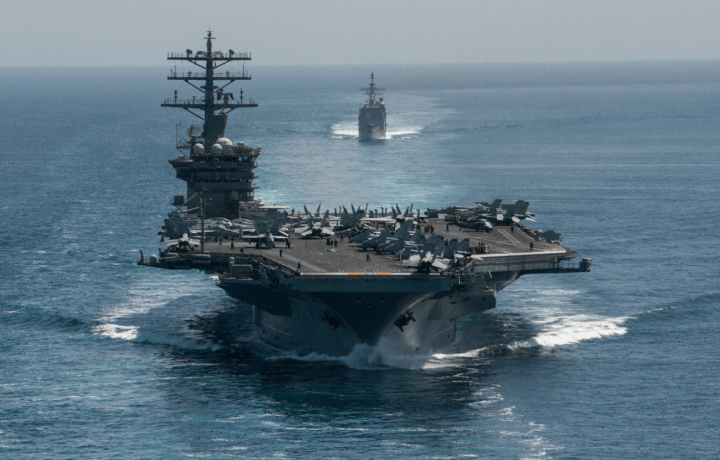For the Fiscal Year 2022 budget, the Department of Defense could have more than 600 ongoing efforts focused on artificial intelligence (AI) and machine learning, a 50% increase over the current-year levels. The Pentagon plans to invest $874 million next year in AI-related technologies to boost deterrence against near-peer adversaries including China – but also to enhance efficiencies in computing, command and control and logistics.
To keep technological pace with China and other potential adversaries, the DoD is looking to leverage its technological advantages by investing in various cutting-edge technologies including hypersonic technology, cyber, quantum computer and AI.
These technologies could change the character of warfare, and potentially result in a more lethal and distributed battlefield. The Pentagon’s efforts with AI and machine learning are also part of the military’s $2.3 billion science and technology research budget. The efforts are being led by the military Joint Artificial Intelligence (JAIC) in Washington.
The Naval Efforts
The U.S. Navy, via its Office of Naval Research, has been pursuing AI applications, which could be used to help train and equip personnel, while also taking over some of the more mundane tasks on board warships. In this way AI could help reduce workload across the Navy, but also increase the speed and even quality of human decision-making.
AI could speed up reaction time for defensive weapons, which could be increasingly critical as more advanced and potentially lethal weapons are being developed. Anti-aircraft and anti-missile systems could have reaction times that exceed the best human operator.
Likewise, AI and machine learning could help with naval operation decision making, which can be greatly impacted by foul weather. Currently, more than 75% of missions are severely disrupted by uncertain weather, and machine learning could reduce those numbers. Researchers at the University of Connecticut are now developing optimization and machine learning algorithms to help plan for such uncertainty.
UConn’s work is being supported by a $1.5 million grant from the Office of Naval Research.
The new algorithm incorporates multi-week meteorological and oceanographic forecasts using the Navy Earth System Prediction Capability, and from this data, AI could reduce weather-related uncertainty in mission planning.
The same technology could then address issues of fleet maintenance. According to recent reports from the U.S. Government Accountability Office (GAO), the Navy’s four shipyards handled 75% of maintenance from 2015 to 2019, and that led to numerous delays. A number of factors including inadequate planning for resources, unplanned work during execution, direct yard costs and work stoppages, played a role – but the development of predictive analytics via machine learning and AI could help improve the efficiency at the facilities.
AI Into Warships
According a new study from research firm GlobalData, “AI in Aerospace and Defense,” the development of these technologies could present a long-term cost-cutting potential, as well as providing easy-to-understand analysis based on large datasets. The study noted that whilst fully autonomous ships powered by AI may not become the norm within the next 10 years, the technology will increasingly be used to aid decision-making in coming years.
“Advanced navies significantly invest in AI, computer and communication technologies in order to have larger and more capable autonomous vessels,” said William Davies, aerospace and defense associate analyst at GlobalData.
“For instance, the US Navy converted two existing commercial fast supply vessels into unmanned surface vehicles (USVs) for its Ghost Fleet Overlord Surface program, which aims to inform and accelerate the Navy’s Large and Medium USV programs,” Davies told ClearanceJobs via an email. “Furthermore, on June 7, the US Department of Defense awarded a $44m contract to Austal USA to carry out the design, procurement, production implementation, and demonstration of autonomous capability in Expeditionary Fast Transport (EPF) vessel, USNS Apalachicola (T-EPF-13).”
The U.S. Navy isn’t alone in making a significant investment in AI.
“The UK invested £4m in 2020 for warship AI development projects, which will help warships to process data and provide crews with improved situational awareness,” added Davies. “Moreover, in 2017, China announced its Next Generation AI Development Plan, with a goal of becoming the world leader in the technology by 2030 – and in 2020 the country unveiled a ‘multi-purpose unmanned surface vessel,’ as well as reportedly developing AI-enabled submarines.”
The old days of wooden ships and iron men are very much a thing of the past, and the future could be high-tech ships and unmanned systems.


